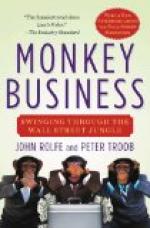“You mean the wood carver?”
Coquenil shrugged his shoulders. “Call him a wood carver, call him what you like. He didn’t go to the photographer in his wood-carver disguise, he went as a gentleman in a great hurry, and willing to pay any price for the work.”
Tignol twisted the long ends of his black mustache reflectively. “He was covering his tracks in advance?”
“Evidently.”
“And the smooth young widow lied?”
“Lied?” snapped the detective savagely. “I should say she did. She lied about this, and lied about the whole affair. So did the men at the shop. It was manufactured testimony, bought and paid for, and a manufactured picture.”
“Then,” cried Tignol excitedly, “then Groener is not a wood carver?”
“He may be a wood carver, but he’s a great deal more, he—he—” Coquenil hesitated, and then, with eyes blazing and nostrils dilating, he burst out: “If I know anything about my business, he’s the man who gave me that left-handed jolt under the heart, he’s the man who choked your shrimp photographer, he’s the man who killed Martinez!”
“Name of a green dog!” muttered Tignol. “Is that true, or—or do you only know it?”
“It’s true because I know it,” answered Coquenil. “See here, I’ll bet you a good dinner against a box of those vile cigarettes you smoke that this man who calls himself Alice’s cousin has the marks of my teeth on the calf of one of his legs—I forget which leg it is.”
“Taken!” said Tignol, and then, with sudden gravity: “But if this is true, things are getting serious, eh?”
“They’ve been serious.”
“I mean the chase is nearly over?”
M. Paul answered slowly, as if weighing his words: “This man is desperate and full of resources, I know that, but, with the precautions I have taken, I don’t see how he can escape—if he goes to Bonneton’s house to-morrow.”
Tignol scratched his head in perplexity. “Why in thunder is he such a fool as to go there?”
“I’ve wondered about that myself,” mused Coquenil “Perhaps he won’t go, perhaps there is some extraordinary reason why he must go.”
“Some reason connected with the girl?” asked the other quickly.
“Yes.”
“You say he calls himself Alice’s cousin. Isn’t he really her cousin?”
Coquenil shook his head. “He isn’t her cousin, and she isn’t Alice.”
“Wha-at?”
“Her name is Mary, and he is her stepfather.”
The old man stared in bewilderment. “But—how the devil do you know that?”
Coquenil smiled. “I found an inscription on the back of that Brussels photograph—I mean the genuine one—it was hidden under a hinged support, and Groener must have overlooked it. That was his second great mistake.”
“What was the inscription?” asked Tignol eagerly.
“It read: ’To my dear husband, Raoul, from his devoted wife Margaret and her little Mary.’ You notice it says her little Mary. That one word throws a flood of light on this case. The child was not his little Mary.”




